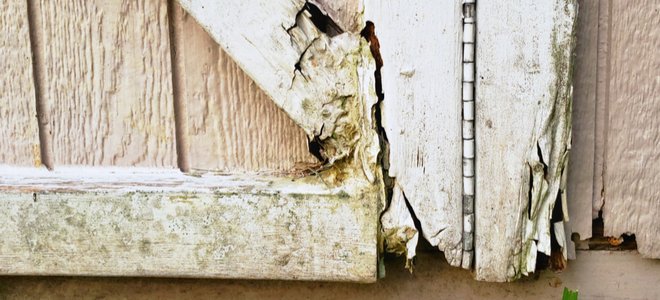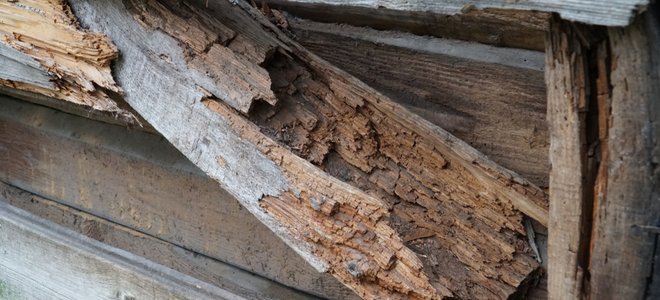 Beginner
Beginner
As soon as the construction of a house begins, it becomes a target for rainwater, UV exposure, floodwaters, moisture, etc., doing their damage. Once you’ve moved in, the wear and deterioration of mechanical parts from utilities and appliances start, around the sinks, bathtubs, showers, toilets, washers, dishwashers, plugged or inadequate drain pipes, floodwater, and the list goes on.
Some of it even occurring without your knowledge, as the water slowly sneaks its way inside, taking years sometimes to affect the structural integrity of the building. Thorough visual inspections of your house should become a regular occurrence to identify problems as they occur, from the foundation right up to the attic, and let you correct the faults before rot takes over, making the repairs much more serious and challenging to complete.
Once the rot gets its footing into the wood fibers, it can be very difficult to stop. Even after digging out and re-treating the rotted wood, most chemical products sold for wood rot treatment are ineffective against the spores and water that remain within the sound section of the lumber where it continues its destruction under the repair even after the affected area is filled with epoxy or coated with paint.
There are, however, two commonly available products—if and when used properly—that will kill the rot in the wood and lumber and prevent it from re-occurring. One of them is Borate (Borax or Boric Acid), the other Ethylene Glycol, known as automotive antifreeze/coolant.
Borate
Formulations and hazards – Boric acid and its sodium borate salts are active ingredients in pesticides against insects, spiders, mites, algae, molds, fungi, and weeds and come in a number of formulations, including liquids, granules, wettable powders, dust, pellets, tablets, gels, and rods. Inorganic borates generally display low acute toxicity orally, dermally, and by inhalation unless their exposure is far higher than any levels to which the human population could be exposed.
Borates tend to migrate towards the moisture which gives it the benefit of soaking in towards the spores, and remains in place even if the wood dries out and is activated again as the moisture rises into the wood, except that if the wood dries out, the borate dries and rises to the surface. The danger here is that borate being water-soluble, the treatment is at risk of getting washed off if soaked by rainwater, or if it’s close to or sitting on the ground, of dispersing into it. So wherever the potential of such conditions exists, additional protection should be provided in the form of water repellents, paint, or special treatments for on-ground and in-ground use.
Ethylene-Glycol
Formulations and hazards – Ethylene-Glycol is about the most effective treatment to kill rot spores and other destructive organisms on wood already showing signs of rot infection, surpassed only by an antifreeze and borates mixture where the Glycol sort of acts as the vehicle that draws the borate into the dry wood as it gets soaked. Another fact worth mentioning here is Glycol’s effectiveness to get rid of termites. Unlike Borates, however, Glycol is extremely toxic to a wide spectrum of organisms, including mammals.

Common Infection Areas Around the Home1. The Roof and Attic
Deteriorating roofing is a sign to follow up on and checking the attic for infiltrations could likely show rot formation on the rafters and joists of the roof structure and the woodwork below. With the roof repaired, you can have the rafters and joists along with the sheeting properly treated with borate.
For a shake and shingle roof, a borate treatment should be followed with a compatible water repellent. If treated with a glycol-containing solution, however, it may be a bit more difficult to find a proper water repellent as the glycol tends to keep most repellent solutions from drying—check with the suppliers and do a sample test before proceeding.
2. The Basement and Ground-Level Exposures

Liquid borate will provide protection to treated sill plates and band joists that haven’t already been coated with a finish. On the exterior of the house, you can treat the foundation wall and the bottom of the siding with a garden pressure sprayer, keeping in mind however that the borate is a powerful herbicide not to be used outside the range of the job.
3. Inside the Home
A lot of rot damage also occurs inside laundry rooms, bathrooms, and kitchens, often caused by leaky or defective plumbing or appliances relying on a water supply. The leaks usually seep through the flooring down to the subfloor and the joists or other structures. You will usually notice when the flooring becomes uneven or the floor shows some give in specific places, at which point, though, it will require major removal of the rotted wood, followed with a thorough borate treatment before replacing the affected lumber and subfloor. It should be noted that all repairs should be done using only galvanized or stainless steel nails. Since borate is a salt, you should avoid using aluminum or any uncoated nails and fasteners.
4. Stairs and Other Exterior Woodwork
Exterior stairs, and porch steps, as well as windows and doors sills, casings, facings, and other trims, could also be subject to wood rot. In risers construction often done in rough, checked, or weathered lumber, the rough surfaces of the wood will provide better penetration for the borate and the glycol. A glycol-borate mix would probably offer the best protection in such an environment, providing it is followed by a coating with an adequate water repellent since it will be submitted to rainwater from time to time.
The windows and their trims can easily be treated by drilling small holes first then injecting a concentrated borate gel into the holes. This doesn’t require stripping the paint first and allows the borate to start diffusing immediately inside the wood to protect it.

5. Balloon-Framed Houses
A balloon-framed house can offer the chance to apply treatment into the wall cavity. Ideally, the wood should be protected within 3′ of ground level, applying it with possibly a brush or by spray, along with the mudsill and the band joists.
6. Heavy-Timber Buildings
A heavy-timber building will usually require more preservative mix than a normal framed house. The treatment here can be applied by brush or sprayed on, but to complement the application, inserting rods made from concentrated borates into the end of the timber, where the moisture absorption is greater. This will spread the borate through the length of the wood fibers when the moisture content of the wood reaches 30% MC, which is the point at which decayed fungi become active.
Product Availability
The preservatives or products can be purchased commercially as solid sodium octaborate for making solutions in water, and as a solution of sodium octaborate in ethyl glycol with a 40% concentration of sodium octaborate. More concentrated solutions or even equivalents, however, can also be prepared at a lower cost from Borax, boric acid, and antifreeze.
More From Doityourself How To Handle A Chain Saw: Cutting Tips Using A Gas Weed Eater: 3 Tips
Source link : https://www.doityourself.com/stry/2-dry-rot-treatment-tips












